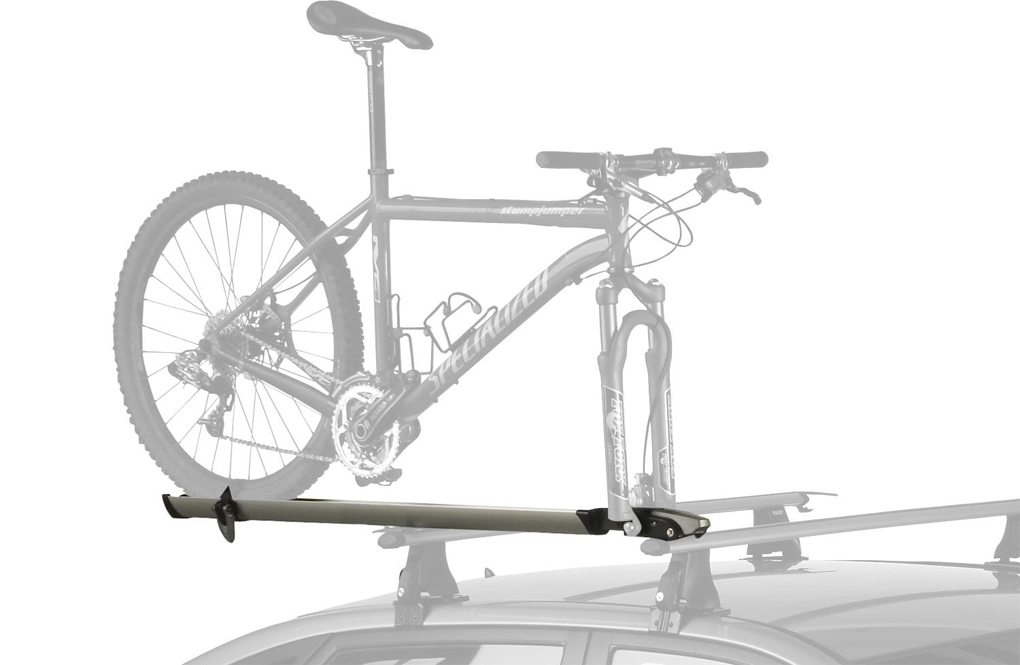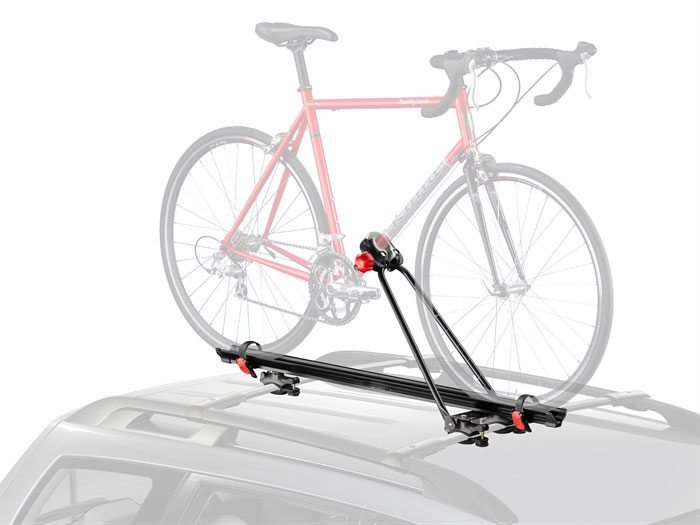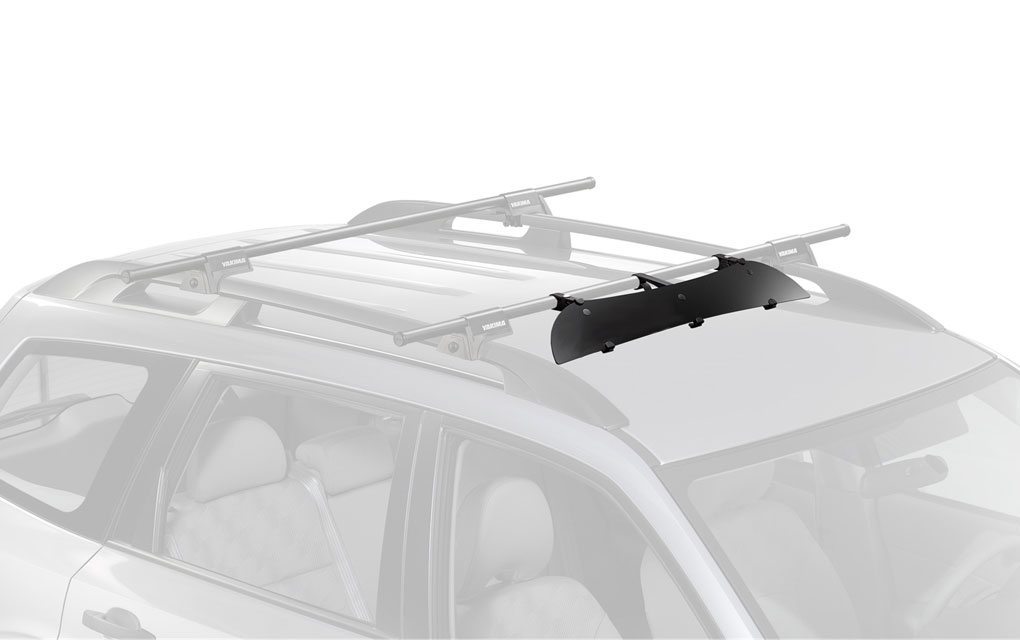If you’re in need of a bike rack, the process might seem simple: buy rack, attach bike, go ride.
But there are several different types of bike racks out there, and each has its pros and cons—some of which may not be apparent at first glance.
What follows, however, is not meant to be a buyer’s guide. There’s no discussion of any particular brands or attempts to steer toward one type of rack over another. Rather, think of this as a candid discussion of one person’s experience with various rack types. Having a better idea of the pros and cons of each will help you get the rack that will work best for you.
There are three basic rack types out there: the roof rack, the hitch rack, and the “strap-on” rack. (There are a few others that don’t really fit into any of these categories, but these three are far and away the most common.)
For any given rack type, I generally look at the following criteria (in rough order of importance):
1) Price
2) Ease of use
3) Compatibility with different bikes and other equipment
4) Compatibility with various vehicles
5) What, for now, I’ll call “miscellaneous issues.”
Price is fairly self-explanatory, and you often—but not always—get what you pay for.
Ease of use generally has to do with how much monkeying around is required to get the bike mounted on the rack.
Compatibility issues often arise when you want to use the same rack to carry an oddly shaped DH bike, a road bike, and a small kid’s bike; some racks handle varying frame designs and sizes more gracefully.
Vehicle compatibility issues look at how easy it is to switch the rack onto a different vehicle, which might or might not be important to you.
Miscellaneous issues are just the random problems (or advantages) that are inherent to the various rack types.
Let’s start with roof racks.
Roof Racks
Roof racks are generally the most expensive option of the bunch (roughly $100-200 per bike, plus components—see below), although some hitch-mount racks are giving them a run for their money. For that reason, they score low marks on the price front. But where roof racks really make up for this is in their versatility: they’re one of your only options if you want one rack system to carry a bike, skis, kayak, or Mitt Romney’s dog.
Roof racks also have the big benefit of being easily scalable. Generally, roof racks are sold as separate components—you buy the basic crossbars for your car and then buy attachments for the gear you’re looking to carry. Thus, if you need to carry only a single bike, you only have to buy a mount for one bike. Conversely, if you need to scale up to carry a lot of bikes (i.e. more than four), roof racks are one of your only options. For that reason, the price for a roof rack will vary a lot depending on how elaborate your setup needs to be.
The ease of use of a roof rack really depends on your vehicle and your stature. If you’re 6’ 5” and want to stick your bike on top of your sedan, you’ll do just fine. However, if you wear thick shoes so that you can reach the pedals in your Suburban, you might want to consider alternatives.
Depending on what type of rack you put on your roof, the compatibility issues vary. The most common types of roof mounted bike racks are fork-mounted and “wheels on” racks. Fork-mounted racks (where the front wheel is removed) generally hold the bike securely and are easily lockable, but they’re not as quick and easy to use, especially if your bike has a thru axle.

It’s also worth considering not only your bike, but also bikes owned by people you ride with. If you want to give your friend and his Cannondale a ride to the trailhead, the fork-mount isn’t going to work with his Lefty unless you have an adapter, and for the price of the adapter, you probably could have just upgraded to a “wheels on” style rack in the first place. The same basic premise goes for your friend and his DH bike (thru axle) or your friend with his BMX bike (no adaptor needed, but you need tools to get the wheel off).
While my preference goes to the “wheels on” racks, which clamp onto the (still attached) front wheel, they don’t work well for smaller wheels (less than 20”). The “wheels on” racks also tend to be a bit trickier to lock securely. Other styles of “wheels on” racks hold the bike by the crank arm or by clamping to the downtube, but, in my experience, both of those styles are considerably less stable and have a variety of compatibility issues (though I know plenty of people use them without incident).

As far as compatibility with various vehicles, roof-style racks are low on the ladder. While you can switch roof racks between vehicles (sometimes, depending on the rack, and depending on the vehicle), it’s time consuming and not really something that you’ll want to make a habit of.
For the forgetful types, a significant downside of roof racks is that you may, eventually, drive into a garage and sheer your expensive bike off the top of your car. While this is theoretically an easy issue to avoid, it happens all the time—even to otherwise mindful and intelligent people.
Another minor problem with roof racks is that your bike is fully exposed to bugs and other highway debris. Unlike racks where your bike is behind the vehicle, long drives with a bike on the roof will usually require some time to clean the bug splatter off your fork, brake levers, etc.
Roof racks also tend to bring your gas mileage down a bit for that same reason: you’re dragging a fair amount of stuff through the air, and your otherwise aerodynamic vehicle is much less so with a bike or three on the roof.
On some cars, the extra stuff on the roof can also come with a significant (and annoying) increase in noise. Generally, a fairing will help with the noise, and comes with the added benefit of giving you a convenient place to put your “Who’s Your Farmer” stickers.

NEXT: HITCH RACKS

Great overview of rack systems! One thing to mention is that both Yakima and Thule make adapters that will go over some of their hitch bike racks to make them able to carry skis. A little over $200 in addition to the bike hitch rack.
Yakima
http://yakima.com
Thule
http://www.thule.com
Good writeup. I would agree that hitch-mount wheel tray racks are probably the best choice, although if the trailhead is down a gravel road, it’s surprising how dusty the bikes get back there.
My favorite rack is the inside of my van!
Fuck bikes I want more skis
in Alberta some hitch mounted bike rack owners have been ticketed for obstructing their license plates. Could be a potential downside.